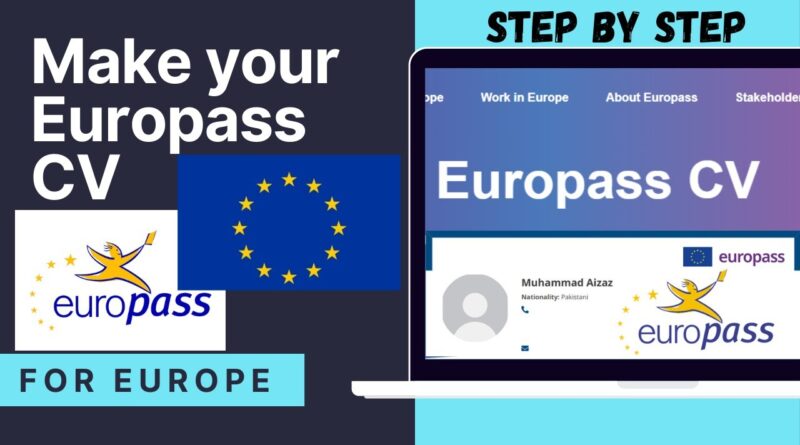How to Create a CV in Europass Format
Creating a CV in the Europass format can be a useful tool for job seekers and international students, as it is a standardized format that is widely recognized by employers across Europe. The Europass CV allows you to present your qualifications, skills, and experience in a clear and concise manner, making it easier for employers to understand your background and suitability for the job. In this blog, we will walk you through the steps to create a Europass CV.
Read Without IELTS – University of Padua Admission 2023-24
Step 1: Go to the Europass website
The first step in creating a Europass CV is to visit the Europass website. You can find the website at the following link:
https://europass.cedefop.europa.eu/
Step 2: Create a Europass account
Before you can create a Europass CV, you will need to create a Europass account. To do this, click on the “Create a Europass” button on the home page of the website. This will take you to a page where you can enter your personal information, including your name, email address, and password. Once you have completed the form, click on the “Create” button to create your account.
Read No Application Fee – Sapienza University of Rome Admission 2023-24
Step 3: Start a new Europass CV
Once you have created your Europass account, you can start creating your Europass CV. To do this, click on the “Create a CV” button on the home page of the website. This will take you to a page where you can choose the language and layout for your CV. Select the language and layout that you prefer, and then click on the “Start” button to begin creating your CV.
Read No Application Fee – University of Camerino Admission 2023-24
Step 4: Enter your personal information
The first section of the Europass CV is the personal information section. This section includes your name, address, phone number, and email address. Enter this information in the designated fields, and be sure to include any additional information that you think might be relevant, such as your date of birth or nationality.
Read Best Universities in Italy 2023 Ranking List
Step 5: Describe your education and qualifications
The next section of the Europass CV is the education and qualifications section. In this section, you will need to list any formal education and qualifications that you have received. This includes high school diplomas, college degrees, and professional certifications. Be sure to list the name of the institution, the degree or certification that you received, and the dates of your studies.
Read Top European Countries Offering Free Education for International Students
Step 6: Describe your work experience
The next section of the Europass CV is the work experience section. In this section, you will need to list any paid or unpaid work experience that you have had. This includes internships, part-time jobs, and full-time positions. Be sure to list the name of the company, the dates of your employment, and a brief description of your responsibilities and achievements.
Read Scholarship – Italian Government Scholarship & Need-Based Scholarship
Step 7: Describe your skills and competencies
The final section of the Europass CV is the skills and competencies section. In this section, you will need to describe any skills or competencies that you have developed through your education, work experience, or other activities. This could include technical skills, such as proficiency in a particular software program, or soft skills, such as communication or problem-solving abilities. Be sure to list any relevant skills and competencies that you have.
Read Cheap Accommodation for Students in Italy – International Student Apartments in Italy
Step 8: Review and submit your Europass CV
Once you have completed all of the sections of your Europass CV, be sure to review it carefully to make sure that it is accurate and well-written. Pay attention to spelling and grammar, and be sure to use clear.
Read Study in Italy – Step-by-Step Admission Process in Italian Public Universities


Pingback: Study in Italy - Step-by-Step Admission Process in Italian Public Universities - Free Education Countries
Pingback: Study in Germany from Pakistan - Free Education Countries